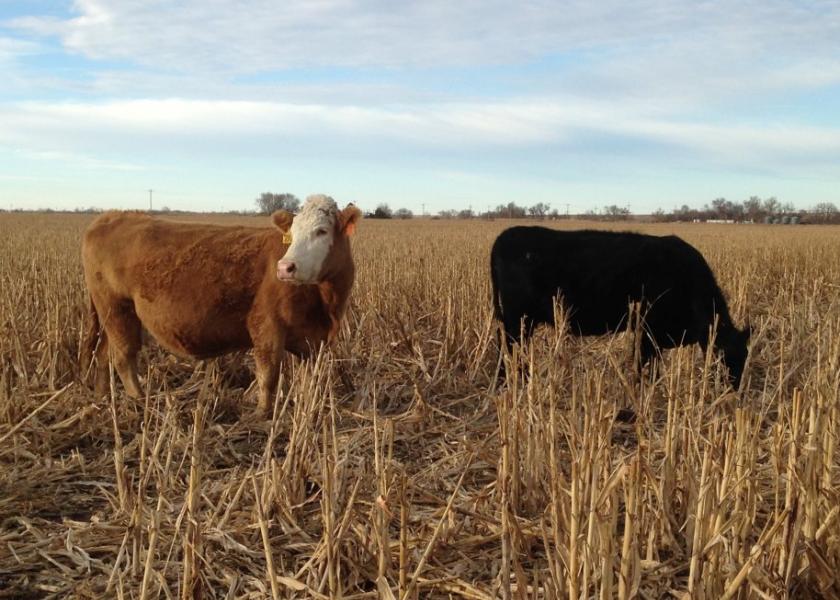Grain Sorghum Residue for Beef Cattle

Grain sorghum residue provides similar quality to corn residue and can be more accessible in winters with deep snow cover.
By: Karla H. Jenkins, UNL Cow/Calf, Range Management Specialist
Grain sorghum has long since been a major grain crop for the Texas Panhandle and parts of Kansas. It is a crop that can withstand substantial water shortage and produce acceptable yields as long as the growing season is favorable for its maturity. In recent years it has begun to gain popularity again in Nebraska for a couple of reasons. The drought of 2011-2013 made the hardy crop more favorable in areas of Nebraska where either irrigation is limited or farming is conducted on dryland acres. According to a June 2014 NASS report, 140,000 acres were planted for sorghum grain harvest in 2013 and that was up to 160,000 in 2014 in Nebraska. Additionally, grain sorghum now qualifies as an advanced biofuel increasing its appeal to ethanol plants. The by-product of the sorghum crop most beneficial to cattle producers may be the crop residue itself.
Research evaluating corn residue and sorghum residue for growing calves was reported by Irlbeck and others in the 1990 Nebraska Beef Cattle Report pp. 55-58. Those researchers found cattle grazing corn residue fields gained more than those grazing sorghum residue fields, most likely due to the amount of residual grain left in the field. Grain harvest efficiency has improved and these differences have likely decreased. However, these researchers also reported in a winter with 15 inches of snow, cattle grazing sorghum residue had an advantage due to more available leaf residue. This is most likely due to the harvest method of sorghum. The sorghum head is clipped off and the majority of the leaves and stems are left standing. This creates a digestible forage resource (about 56% TDN) that cattle do not have to dig through the snow to find. While the leaf material is similar in TDN between corn and sorghum residues the sorghum stalk is greater in digestibility than the cornstalk. The risk of digestive upset from the overconsumption of grain is less for sorghum than for corn due to the small size and coating of the sorghum berry. However, caution should still be exercised in fields where grain was spilled or excess grain is down. Similar to corn, about 16 lbs. of dry matter is produced for every bushel (56 lbs.) of grain produced. Only about 50% of that is consumed by the animal so producers can figure 8 lbs. of dry matter residue is available for every 56 lbs. of grain produced.
A study reported in the 2010 Nebraska Beef Report pp.40-41 that cattle grazing a brown midrib (BMR) variety of grain sorghum had greater daily gain and ending body weight than cattle grazing a traditional variety of grain sorghum. The increased performance was most likely due to the increased digestibility of the fiber which was also reported in that study. The calf gains were similar to those of calves grazing corn residues.
As pasture becomes more limited and more expensive, crop residues will become increasingly important to the profitability of cattle operations. Grain sorghum residue provides similar quality to corn residue and can be more accessible in winters with deep snow cover.







